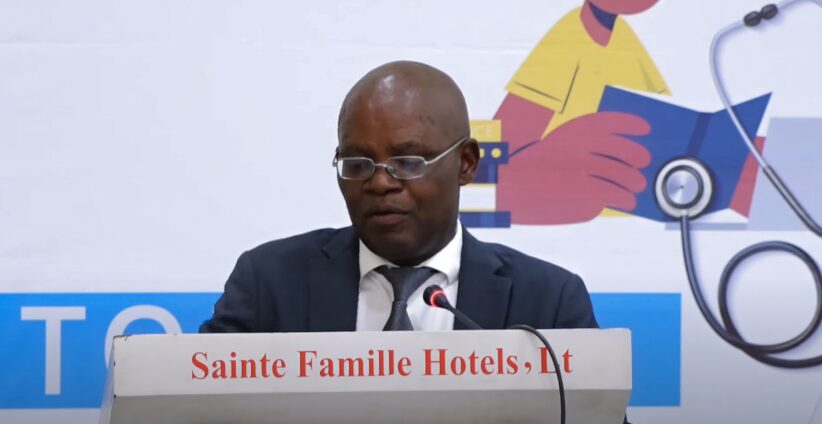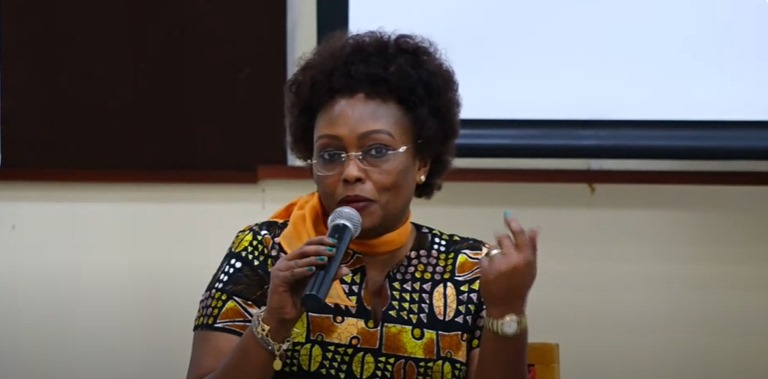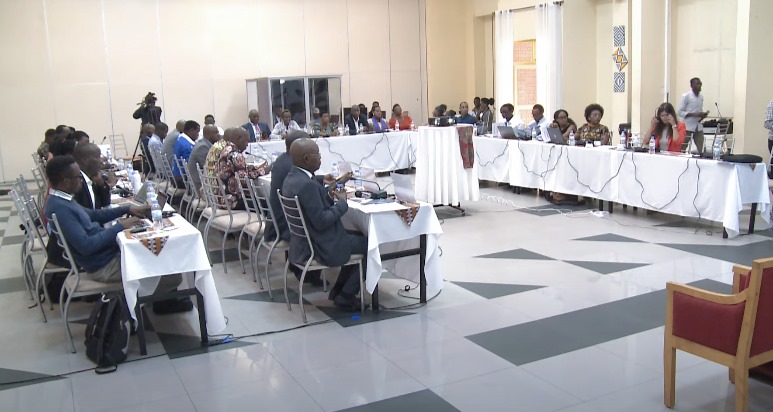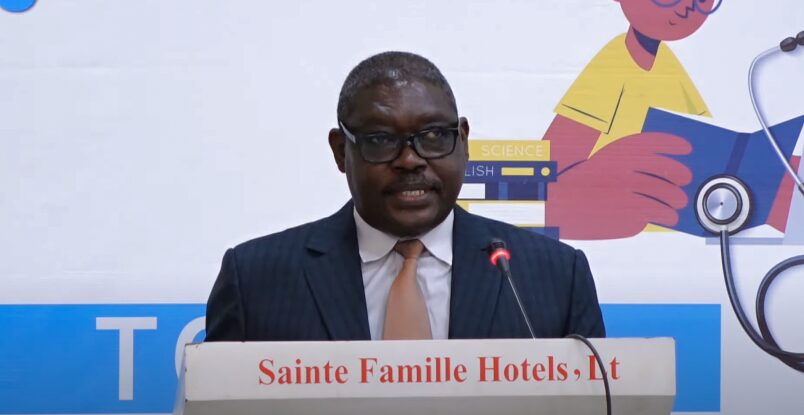
TI- Rwanda Executive Director, Apollinaire Mupiganyi
Transparency International Rwanda (TI-Rwanda) has presented qualitative research findings that show high risks of corruption, bribery and sex favors in both the education and health sectors.
The findings “Corruption Risk Assessments in the Education and Health sectors in Rwanda” conducted in five districts, were presented this May 30, 2024 as part of the “Inclusive Service Delivery for Africa” (ISDA) project which operates in five African countries- Rwanda, Democratic Republic of Congo, Ghana, Madagascar, and Zimbabwe.
The corruption risk assessment aims to evaluate the corruption risk in the education sector in Rwanda, as well as to examine how corruption may prevent women, girls, and other vulnerable groups from accessing education services.
In Rwanda, the corruption risk score was measured through likelihood and impact whereby: Likelihood (1-5) stands for chances that the risk will take place, with score ranging from 1 to 5 (1=low risk and 5=high risk) Impact (1-5) represents the expected effect on the foreseen result, with the score ranging from 1 to 5 (1=low impact, 5=high impact).
In the education sector the findings revealed high risks and likelihood of corruption in food supply to public schools, student grading, internship allocation and grading for TVET/tertiary students, student admission, placement in public secondary schools; teachers’ recruitment and transfers.
Findings from respondents showed that the risks of corruption, bribery and sex favors in job allocation and transfers of administrative staff and teachers were high. For instance, the service seekers’ risks were at 3.8 and providers’ risks at 3.9; while in internship supervision, the service seekers’ risks were at 4 points and providers’ risks at 3.9.
The findings also showed high risks of sextortion for students during grading in public secondary and tertiary institutions. For instance, the grading process had a 3.6 risk point score for both the service seekers and providers.

Collette Ndabarushimana, the Policy and Legal Coordinator at Ti-Rwanda
Collette Ndabarushimana, the Policy and Legal Coordinator at Ti-Rwanda said that the sextortion issue is a big concern that needs to be given attention as it largely affects women and girls.
To another extent, the risks and impact in this sector was extended to vulnerable persons with disabilities especially women and children.
Claudine Munganyinka* (not real names) a victim of the above case showed how she faced a double jeopardy when her disabled daughter was denied a place in a secondary school and it was instead offered to a rich businessman who also had a disabled child.
“First of all, my child was denied a chance to join secondary school but also scrapped off the list of vulnerable beneficiaries under the Ubudehe category 1 and placed in category 3,” She said.
By placing her child in the third category, this means she was financially abled and not vulnerable despite the physical evidence of the child who has compound disabilities- not able to speak, walk and play normally.
“This transparency research should be a voice to show what we are going through and an opportunity to take measures such as embarking on training and educating local leaders,” she stated.
In the health sector, experiences and perceptions shared by Focus Group Discussion and participants indicated corruption risks across various areas of the assessment- with nepotism, favoritism, sextortion, and bribery highlighted as the most prevalent types of corruption.

Participants at the presentation of the Corruption Risk Assessments
Most of the risks found in this sector were not far different from the education sector, and one of the underlying risks cutting across both sectors was the issue of sextortion- to an extent where some patients were sexually abused before getting medical attention.
Specifically, for this sector, findings showed high risks of 3.8 for citizens getting Categorized into UBUDEHE categories, while the other areas such as hospitalization/ admission services, healthcare human resource services, transfer of a patient and internship practices for medical students, supply medicines and non-medical materials generally showed low risks on average.
TI- Rwanda Executive Director, Apollinaire Mupiganyi said, “There are still corruption risks affecting the service delivery chain in both education and health sectors. Therefore, it is paramount to strengthen the service delivery chain.”

Xavier Mbarubukeye, the Permanent Secretary at the Office of the Ombudsman
The Permanent Secretary at the Office of the Ombudsman, Xavier Mbarubukeye said that the outcomes of the research finding, though not quantitative, are informative and can be a stance for Rwanda to further deal with existing cases of corruption and bribery.
Speaking online, Jamie Bergin, the Transparency International Researcher Coordinator said that corruption and its impact in these sectors are generally unrecognized and this undermines aspirations of development goals and observance of rights in both sectors.
Bergin shared mitigation strategies including: greater enforcement (sanctioning), independent auditing and inspection, using digital and automated processes to cut risk factors but also civil society engagement and a need for more awareness efforts.
Paul Banoba, the Africa Regional Advisor Transparency International said that a lot of investment is being injected in both sectors (over$14billion) and unless action is taken, the above trends will impact on lives in the next 15 years.
A Ministry of Health Director General of Health Quality Services Standards and Regulation, Dr. Jean Baptiste Ntihumbya, stated that the findings in the sector were not unknown, however the current reforms, overhaul and restructuring in the sector, which comes with increasing the number of medics per patient (4by4 model), innovation in digital processes and creating a citizen’s feedback platform will address many of the concerns.

